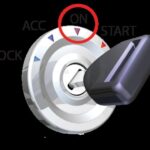The Dell laptop running Windows XP has become a popular choice for running the Mercedes Benz Diagnostic Assistance System (DAS) Xentry software. While sourcing these specific laptops may require some searching, platforms like Craigslist might offer potential leads on vendors who specialize in configuring them for this purpose. However, there are important precautions to take when using this setup.
It’s strongly recommended to dedicate the laptop solely for use with the Xentry system. Avoid installing unnecessary software or browsing the internet as this could compromise the system’s integrity. While some users might have EEPROM reader programs installed, remember that these can be easily replaced if necessary.
There are concerns about malware, potentially originating from Brazil, that some associate with cloned Xentry software. Others believe it’s linked to financial data theft. Regardless of its origin, this malware highlights the risks involved with using unauthorized or cloned versions of the Xentry software. Cloned software often relies on exploiting vulnerabilities for functionality.
To mitigate risks, completely disable the Wi-Fi on the laptop and physically remove the Wi-Fi card if possible. This prevents the cloned software from attempting to communicate with Mercedes-Benz servers (often referred to as “calling home”), which could potentially brick your system.
Allow sufficient time for the laptop to fully boot up. This ensures both Windows and the Xentry software have time to initialize correctly and perform necessary background processes. Rushing this process can lead to instability or errors.
The Xentry program is typically locked to the specific hard drive it’s installed on. While copying the software is possible, it won’t function without generating a new activation code, which is generally not feasible for end users.
Avoid contacting the support number listed within the pirated software. It often leads to Mercedes-Benz/Bosch, potentially revealing your use of unauthorized software.
Mercedes-Benz/Bosch could potentially tap into a significant market by offering a more affordable version of their diagnostic software, similar to the Hand Held Tester (HHT) used for older vehicles. This could cater to the DIY and independent repair shop market for older Mercedes-Benz models.
Currently, the cost of a legitimate Xentry setup is prohibitive for many, with initial investments around $20,000 and annual subscription fees of approximately $6,000. While understandable from a business perspective, this pricing model excludes a large segment of owners and mechanics who work on older Mercedes-Benz vehicles.
